By Andrew Maerkle
Junya Ishigami is widely regarded as one of Japan’s most promising young architects, a status that was reinforced by the conferral upon him of the Golden Lion for Best Project at this year’s 12th Venice Architecture Biennale, in which he is participating. Starting his career with the firm SANAA, Ishigami established his own practice in 2004. His built projects include the Kanagawa Institute of Technology’s KAIT Workshop, a glass-enclosed rectangular structure in which the interior space is divided only by a forest of pillars, and the Yohji Yamamoto New York flagship boutique, for which he conceived a radical renovation of a triangular single-story building in lower Manhattan.
ART IT met with Ishigami at his office in Tokyo while he was preparing for Venice, and discussed with him the role of exhibitions in his experimental practice and the idea of architecture after ideology.
III. The Carbon of Infinity
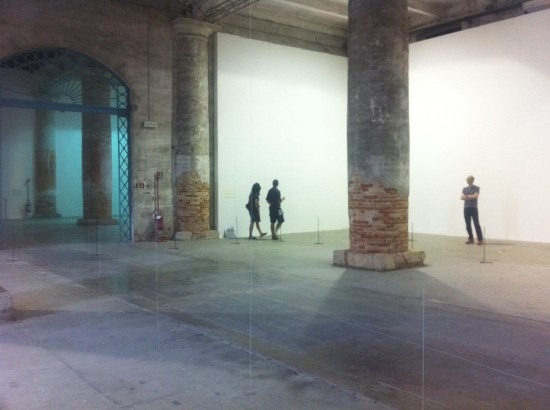 Installation view of Architecture as air: study for château la coste (2010) at the 12th Venice Architecture Biennale, “People Meet in Architecture.” Photo ART iT.
Installation view of Architecture as air: study for château la coste (2010) at the 12th Venice Architecture Biennale, “People Meet in Architecture.” Photo ART iT.ART IT: You are participating in Kazuyo Sejima’s curated exhibition for this year’s Venice Architecture Biennale and also spent several years working with Sejima and Ryue Nishizawa at their firm SANAA. What do you think of Sejima’s theme for her exhibition, “People Meet in Architecture,” and what will you be showing in Venice?
JI: I feel that instead of mandating a clear direction to follow, Sejima has chosen a theme that encourages open interpretation by all the participants. I will be exhibiting something that exists somewhere between architecture and a model, with a width of four meters, a depth of 14 meters and a height of four meters. I am experimenting with how to create out of carbon fiber a large structure that might appear invisible at first glance, but would reveal itself as it is approached. The model will have the dimensions of a building, but its structural members will be incredibly thin, with columns and beams of 0.9mm and 0.02mm in thickness – more the scale of a model – and it will come in and out of view as visitors move around the space.
This model is probably unrealizable as actual architecture, but through this project I want to use architecture to create a new sense of transparency, a kind of building of air. Usually the word “transparency” evokes images of glass or other transparent materials, but even glass requires supports to be held in place. Moreover, the air that surrounds us is often thought of as immaterial, but it actually consists of oxygen, nitrogen and other elements and molecules, which themselves are constituted of subatomic particles. What we take for granted as being immaterial space is in fact filled with massive structures, only these elements are so far removed from our daily sense of scale that we can’t see them with the naked eye. Thus in order to truly reconsider transparency in architecture, I believe we have to reconsider the scale of architecture as well.
I feel that the hierarchy of scale constricts the potential of architecture. A flower could never be realized at the scale of architecture, and architecture itself could never be realized at the scale of the universe. I think that if there were some way to even slightly break down that hierarchy, then we could expand the potentiality of architecture while at the same time creating a new appreciation of transparency.
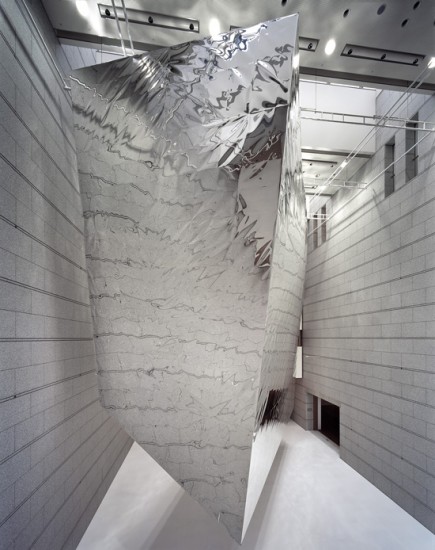 Balloon (2007), mixed media, 1400 x 730 x 1280 cm. Installation view at Museum of
Balloon (2007), mixed media, 1400 x 730 x 1280 cm. Installation view at Museum of Contemporary Art, Tokyo. Courtesy junya.ishigami+associates.
ART iT: Do you feel that it is precisely through exhibition projects that you can pursue this kind of experimental architecture?
JI: It depends on the situation. I think that both the Venice project and my Balloon project for the exhibition “Space for Your Future,” held in 2007 at the Museum of Contemporary Art Tokyo (MOT), definitely have a degree of architectural experimentation. However, in an exhibition environment it is impossible to pursue experiments that require people to interact with a structure as part of their daily routines. So there are experiments that can only be carried out through actual architecture, and there are those that can only be carried out through the exhibition format. For me it’s not a question of saying whether one or the other is necessarily the more experimental.
ART iT: This year alone in addition to Venice you also have upcoming solo exhibitions at the Toyota Municipal Art Museum and Tokyo’s Shiseido Art Gallery. Do you ever find that your production for exhibitions carries over into your architectural projects?
JI: I can’t say that there is a direct relationship. Of course there is some kind of indirect mutual influence, but rather than splitting my work into “exhibitions” and “architecture,” or worrying about whether there is a line of evolution between any given project and its predecessors, I think of each project as its own discreet unit.
That said the project for Toyota is quite similar to Venice, with overlaps between the two. However, since Toyota is a large space, there I will be addressing concepts that relate to the size of architecture and the potentiality of scale.
Even though the venue is an art museum, I’m interested in doing a proper architecture exhibition. The problem is that such exhibitions tend to have limited appeal beyond a specialist audience – a situation perhaps related to the general perception that what is on display is only a secondary expression of actual architecture that exists elsewhere. From another perspective, though, the works on display are tied to something that is incredibly real. Visitors looking at an architectural work – even if it is not complete in its own right – can understand that it has the potentiality of being realized.
So for Toyota I hope to build on that positive aspect in a re-thinking of architectural exhibition practice. I plan on exhibiting five models that will be expanded to extreme dimensions and address ideas on proximity, visible structure and new urban models. And because the models will be so large, I think they will have even greater impact than the Venice model.
On the other hand, the Shiseido exhibition develops from the content of a book on my work that will be published by Thames & Hudson next year. If Toyota is more abstract, then the Shiseido exhibition will be more concrete, with numerous small – almost cute – models displayed with the intention that they be appreciated as models. The idea here is to show the generative aspects of architecture, whereas Toyota will address issues related to space.
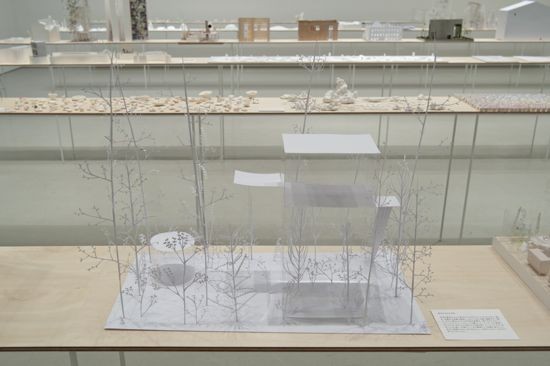
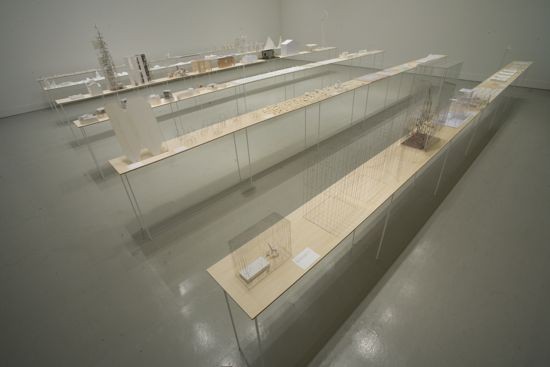
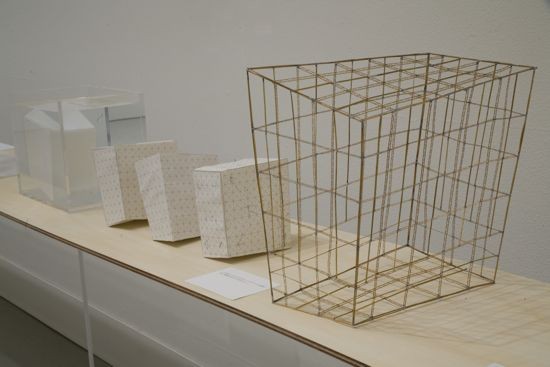 All: Installation view of “How small? How vast? How architecture grows” at Shiseido Gallery, Tokyo, 2010. Top: Photo Yasuchi Ichikawa, courtesy Shiseido Gallery. Middle and bottom: Photo Sakiko Nomura for ART iT.
All: Installation view of “How small? How vast? How architecture grows” at Shiseido Gallery, Tokyo, 2010. Top: Photo Yasuchi Ichikawa, courtesy Shiseido Gallery. Middle and bottom: Photo Sakiko Nomura for ART iT.ART iT: Do you often visit art and architecture exhibitions yourself? Are there any exhibitions you have seen that have made a significant impact on your thinking?
JI: To tell the truth I rarely visit exhibitions. However, right when I started my architecture studies I saw “OMA in Tokyo: Rem Koolhaas and the Place of Public Architecture” (1995-96) at the private exhibition space TN Probe in Tokyo. On display were projects like the Bordeaux House, the proposal for the National Library of France and the proposal for the libraries for the University of Paris, Jussieu campus. I really admired Koolhaas’ work from that period and to see these projects in person was incredibly stimulating. A Koolhaas exhibition is always distinct from those of other architects, communicating a powerful sense of vividness and immediacy. That experience profoundly affected me at the time.
ART iT: We spoke earlier with Sejima and Nishizawa about the issues that determine the design of exhibition spaces. Does your experience exhibiting at various institutions inform your own ideas about how to design exhibition space?
JI: This goes beyond the museum itself, but I think that buildings become more attractive the more they are used in unforeseen ways. For me, architecture that is unable to allow such use feels un-contemporary. In the case of a museum, you have to anticipate that many diverse works will be exhibited there, but you also have to anticipate the possibility that such a facility could be used as more than just an exhibition venue. A museum that is conceived as a projection of cultural authority can only inhibit the potential of its architecture.
ART iT: Was that sentiment partly what inspired the massive metal balloon you exhibited in “Space for Your Future”? Given its monolithic design, the MOT building tends to overwhelm the works on display there. But when you exhibited the balloon in MOT’s canyon-like atrium, you activated a new awareness of the space, and produced a sense of mystery in an environment that usually does not allow for mystery.
JI: I was definitely attracted to addressing the scale of the museum’s atrium, and never considered doing anything that would not relate to the space. The balloon was constructed as a large metal block that was then set afloat, but it wasn’t just about inserting a cubic volume into the “box” of the museum. It had to be something that could transform the space and reveal an unprecedented architectural potentiality. I felt that by partially obstructing visitors’ sightlines the balloon could in effect create different segments of space.
In this way, rather than experiencing the work as an object, visitors experienced it as a large wall, or even a gallery wall. And in seeing the work as a “wall” in a way similar to how they might look at the structure of the museum, visitors could perceive the area between the work and the existing structure as a space in itself. For example, when the balloon floated closer to the ground its base became a low ceiling. In the sense that clouds change the appearance of the sky, so too could this metal cubic balloon change the experience of the space.
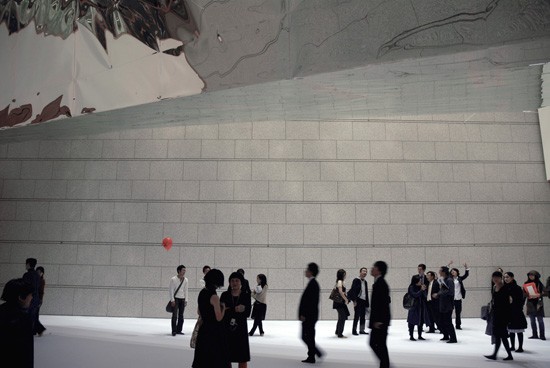 Balloon (2007). Courtesy junya.ishigami+associates.
Balloon (2007). Courtesy junya.ishigami+associates.ART iT: It seems from your discussion of your various projects that you are driven by the idea of challenging the boundaries of how architecture is defined, but do you have a personal starting point in terms of a definition of architecture?
JI: It’s because I don’t have a baseline definition of architecture that I’m interested in challenging how architecture is defined. I don’t know that it’s necessarily a definition, but one significant characteristic of architecture is that the ideas informing it have continued to accumulate upon the foundations of civilization, and have proliferated in diverse forms. Among those forms are of course those that are stylized, or those that are traditional. Sometimes we don’t have any explanation for how these styles or traditions came about, but it is precisely for that reason that I believe architecture inherently contains a tremendous density of information. As an individual I could never hope to comprehend that information in its entirety. My response to that condition is to challenge it, and through such provocation create new propositions that could transform the entire value system of architecture.
ART iT: Another topic that came up with Nishizawa was the difference between an ideological “democratic” architecture and a democratically participatory architecture. Given this situation, what are your views on the relationship between architecture and political expression?
JI: I don’t see any particular significance in turning a building into a representation of ideology. Obviously there are various ideological systems, but at least in the case of democracy, I think the discourse can be so deterministic to begin with that it can actually obscure alternative approaches. Certainly there was a time when there was a need for such determinism, when it was necessary to mobilize diverse elements together on a broad scale. I think that was what happened with Modernism, which coincided with a time when societies were cohering around shared goals and objectives. But now we have so many different value systems coexisting that it’s hard to say what should be upheld and what suppressed, what is good or bad. We have come to understand that different values apply to different people in different places. I think that a clearly defined ideology can be meaningful, but a unilateral ideology – such as that which can produce revolutions and dramatic social change – is no longer effective. Now the prevalence of personal communication devices like mobile phones and computers has given people a more developed sense of their own autonomy in space, and such habitual change has taken precedence over broad social change. Simply making things can do more to affect the world than necessarily thinking in terms of ideology.
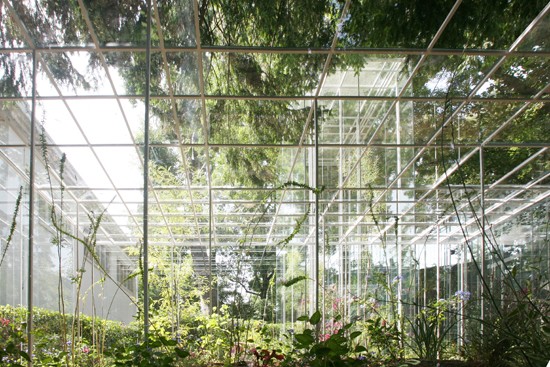
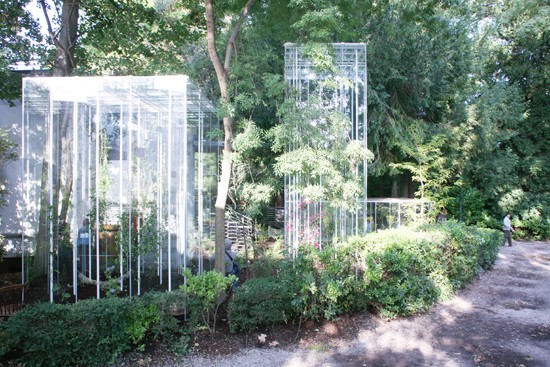 Both: Installation view of the Japan Pavilion at the 2008 Venice Architecture Biennale, “Extreme Nature: Landscape of Ambiguous Spaces,” by Junya Ishigami (architect) in collaboration with Hideaki Ohba (botanist).
Both: Installation view of the Japan Pavilion at the 2008 Venice Architecture Biennale, “Extreme Nature: Landscape of Ambiguous Spaces,” by Junya Ishigami (architect) in collaboration with Hideaki Ohba (botanist).ART iT: But if we no longer think in terms of ideology, doesn’t that leave us with only the motivating forces of commerce and consumption? This seems to be especially the case in Tokyo, where the most radical buildings, like Herzog & de Meuron’s Prada store in Omotesando, develop out of elaborate branding campaigns.
JI: That’s true. I think it’s both a virtue and a failing, but as many people point out, Tokyo has no urban structure. As such, it differs from cities in places like Europe in that it is really more of a landscape than a planned grid. I can’t say for sure that this landscape effect correlates to the kind of architecture that is built, but I do feel that buildings here tend to be conceived as fireworks-style “events.” Perhaps in Europe when a new museum is unveiled it is thought of as a major development in the life of a city, a “moment” that will extend into posterity. But the atmosphere in Tokyo is that both good and bad buildings alike are events that can later be scrapped and replaced as necessary, and that to me is where you can feel the close ties between architecture and commercialism.
ART iT: Do you expect that as your own architecture gains more recognition, this condition is something you will eventually have to confront in your own way?
JI: I think so. I would actually like to try designing a skyscraper. Skyscrapers have increased to a size far bigger than what Le Corbusier imagined, and have already exceeded the scale of Modernism. Such buildings allow for negligible architectural experimentation, and are now mainly determined by the needs of the corporate system. Not so different from the structural or electrical engineers, the architect on such projects is just another cog in the machine. But I am perversely interested in designing a building at such a fundamentally large scale, almost comparable to building an entire city. I feel there is a lot of potential in creating a new proposition for exactly such a platform.
Junya Ishigami‘s work is on display in the 12th Venice Architecture Biennale, “People Meet in Architecture,” through November 21. His exhibition “How small? How vast? How architecture grows” continues at Shiseido Gallery, Tokyo, through October 17, while a concurrent exhibition, “Another Scale of Architecture,” opens at the Toyota Art Museum on September 18 and continues through December 26.
Part I. Kazuyo Sejima: Activities, Environments, Sentient Space
Part II. Ryue Nishizawa: Societes, Landscapes, Building in Time
